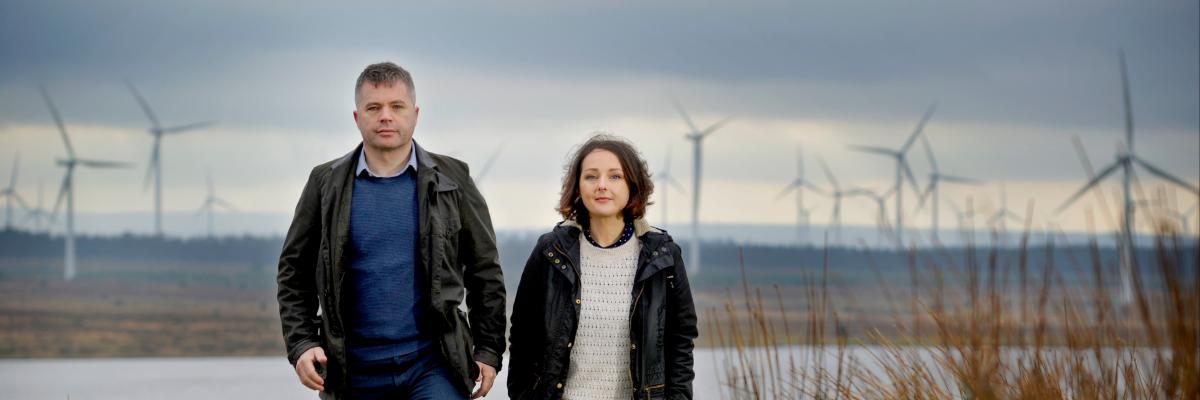
By Steven Lindsay
Back in 2015 a client tasked me with getting rid of three damaged turbine blades. It would have been the easiest thing in the world to have landfilled them, but I didn’t.
Why?
After more than a decade of working in renewables I knew just how many turbine blades there were in the UK. And I knew we couldn’t landfill them all.
I’m a born problem solver and I love tackling difficult problems, but that wasn’t the only reason.
You see an interest in sustainability had planted itself within me, and like a seed it was growing.
As a father of then three and two year olds, I had already decided that I’d spend the rest of my working life helping to secure their future.
A First Solution
Back then there weren’t many blades to dispose of.
Wind turbine blades are amazing constructions and they don’t often go wrong. Made to withstand high and constant wind speeds, and turning millions upon millions of miles during their lifespan, they’re made of sturdy stuff. Which makes them a pain in the @ss to dispose of sustainably.
In hindsight my first sustainable solution wasn’t very sustainable at all, but it was a start.
Energy From Waste
Seven years ago energy from waste wasn’t as frowned upon as it was now. I was just happy to have disposed of blades without involving landfill, but it wasn’t an easy solution.
I had used my contacts to find equipment strong enough to shred a turbine blade and size it down to go in an EFW plant – but that wasn’t the end of the challenges. Issues with the material itself ensured we had to continue to innovate in order to get it into an EFW plant.
Today that EFW door is starting to slam shut. It’s simply not a sustainable solution for the needs of our industry.
Ideas & Circular Solutions
In recent years I’ve had the privilege of working with some of the UK’s most experienced blade technicians and blade service providers.
With COP26 on the horizon I wondered whether we could make practical, genuinely useful items from blades that would demonstrate that a circular destination for turbine blades is viable.
Now, if you’ve ever worked in wind O&M you’ll know what a big task this was. You can’t ‘just cut it up’ because turbine blades are designed to be stubborn and awkward. But in the end we got some cracking prototypes designed, and yes – one of our podiums did indeed make it all the way to COP26, as well as other important industry events.
Fast forward to today, and we are now at the cutting edge of blade re-lifing, circular economy and we are scaling up fast to make sure we are ready to dispose of literally thousands of blades for our clients.
A Family Business
I’ve grown businesses and run businesses on behalf of other people, but starting my own business was and is a learning curve, and it was a journey I didn’t want to make solo.
Covid put the corporate ladder into perspective for my wife Fiona, as well as for myself, so we decided to jump together.
Plus, I don’t know anyone who knows quite as much about windfarm site repowering as Fiona – it’s kind of her specialist subject.
ReBlade Is Born
Whatever happens from here on in is on us, but I’ll be honest, the success of ReBlade isn’t just down to us alone.
We have had incredible help and support in the early stages of our business, from Charlotte Stamper of Zero Waste Scotland and Graeme Clark of Scottish Enterprise, as well as inspirational chats with climate conscious leaders such as Martin Valenti. Special mention must also go to Lee Callaghan and Barry Carruthers who have proven to be excellent sounding boards - using their detailed knowledge of the sector to help guide our business
We have said from the start, we both got into this business because we want to make a difference.
More so than ever before, that remains our driving purpose.
